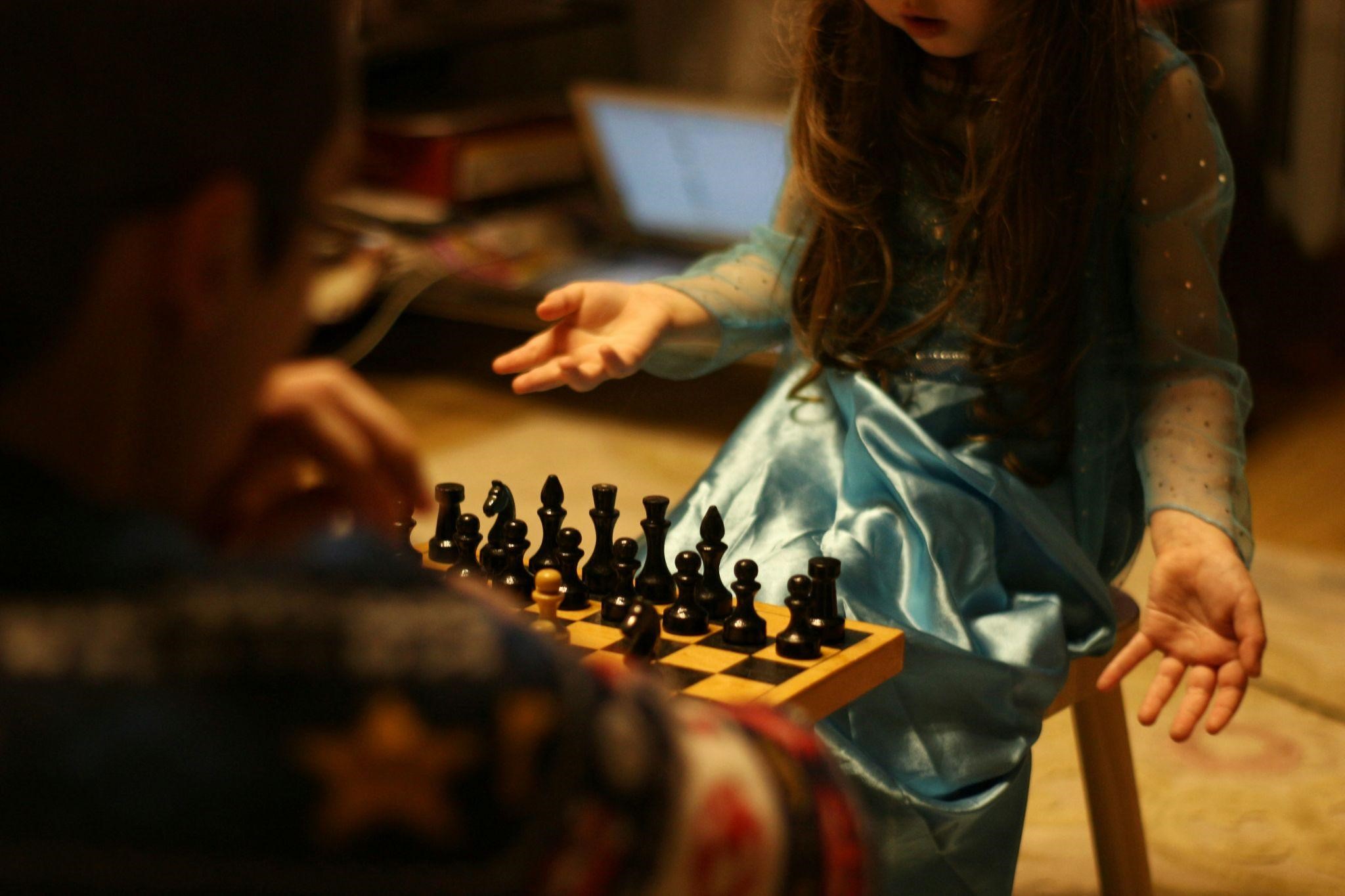When you play a part in helping forming strategic thinkers, it can be seen as one of the ultimate parenting achievements. Who wouldn’t want their child to become a master problem-solver and decision-makers? Teaching your children strategy goes far beyond winning board games or excelling in chess. It is a life skill that helps them meet challenges head on, think critically and make wise choices. In this blog, we will look at why strategy education is important and ways it can be made fun and educational for your kids.
Why Teaching Strategy Matters
Life is full of choices, challenges, and opportunities. Having a strategic mindset provides your child with guidance in making thoughtful decisions for success in any aspect of their lives, such as schoolwork, friendships, sports or long-term goals like college applications. Teaching strategy gives children a compass for making smart decisions with intention instead of reacting impulsively which can make a dramatic difference when faced with tough choices and situations. Teaching children strategy equips them with important toolkits for independence. Giving them independence and teaching them to rather than reacting reactively to make informed choices themselves can make all the difference for their development.
The Benefits of Strategic Thinking for Kids
Improved Problem-Solving Skills
Learning to strategize equips children to tackle challenges by breaking them down into manageable steps and finding creative, effective solutions. Strategic thinking helps form adaptability and resourcefulness while developing confidence to approach problems head on with determination. These are important skills not only in academic settings but in everyday life as it enables children to overcome obstacles more easily while making sound decisions. Helping form improved problem-solving capacities through strategizing prepares children for an unpredictable future where critical thinking and ingenuity will be necessary components.
Better Decision-Making
Children can learn to evaluate options by considering both pros and cons before making decisions, encouraging them to think critically and consider all potential outcomes of their choices. Over time, children develop this skill into making thoughtful, informed decisions which lead to positive results. Giving them greater responsibility, accountability and confidence when faced with new challenges or opportunities in life. Improved decision-making skills benefit both their academic and personal endeavors.
Enhanced Focus and Patience
Strategic activities offer young minds many valuable lessons in focus and patience development. Engaging in these activities involves careful planning and waiting until it’s the appropriate moment to act, teaching disciplined behaviors. Through engagement in such activities, children learn about planning ahead, staying attentive during various situations, adapting quickly for long-term goals while developing resilience as a result of such experiences. By cultivating both focus and patience early, children gain skills important for academic challenges as well as personal growth.
Resilience
Children develop resilience through taking an approach to problem-solving that encourages them to view obstacles with a strategic mindset, meeting challenges head-on and adapting to setbacks, planning their actions thoughtfully and reflecting upon them after action is taken. By carefully planning and reflecting upon actions taken, resilience can be built with ease even when outcomes remain unpredictable. Overcoming obstacles builds a growth mindset, encouraging kids to see mistakes as learning experiences rather than failures, strengthening confidence and emotional fortitude. So that when difficulties arise they recover with positive attitudes allowing them to rebound quickly from difficulties more easily allowing recovery with positive outlooks when difficulties arise in life. Developing resilience early equips children with essential tools essential for effectively dealing with life’s obstacles while cultivating determination and self-assurance during both academic and personal pursuits.
Ways to Teach Strategy to Your Kids
Strategy can be taught without being boring for your kids. Here are some engaging, child-friendly techniques to help form their inner tactician:
Introduce Board Games and Puzzles
Nothing helps form strategic thinking like traditional board games like Chess, Checkers and Risk. Classics like Settlers of Catan or Scrabble involve resource management and planning more comprehensively. Start with age-appropriate board games then gradually introduce more complex ones over time. Puzzles provide another powerful means of improving logic by challenging younger children to find solutions while developing natural strategies to assemble pieces together.
Encourage Problem-Solving in Everyday Life
Everyday life provides many opportunities for teaching strategy. Challenging your child to plan a family dinner, pack for a trip with limited suitcase space or complete a school project within its deadline can all serve as strategic exercises. Encourage them to approach these situations logically instead of acting impulsively and ask questions such as “What steps must we take first?” and “What’s the ultimate goal?” to guide their decisions.
Allow Your Child to Play Online Games
Online games, when selected carefully, can be an excellent tool for developing strategic thinking and problem-solving skills in children. Mahjong requires players to analyze patterns, anticipate future moves and make calculated decisions in order to reach their goal. Giving your child opportunities to engage with such games can help form cognitive abilities while teaching patience and focus. Playing alongside your child provides an enjoyable bonding experience while ensuring gaming remains balanced and constructive.

Photo by Annie Spratt on Unsplash
Use Team Sports or Outdoor Games
Team sports such as soccer or basketball can teach children to think strategically while cooperating with teammates, anticipating opponents’ moves, and devising winning strategies together, encouraging collaboration and quick thinking skills. Even simpler games like capture the flag or scavenger hunts provide great opportunities to plan and change strategies quickly on the fly.
Practice “What If” Scenarios
Role playing exercises that practice “What If” scenarios are a great way for children to develop strategic thinking skills and practice strategic planning. Start them thinking through hypothetical situations such as, “What would you do if you got lost in the supermarket?” or “How would you handle a disagreement with a friend?” Walk them through their thought process while offering suggestions for alternative solutions. These imaginative exercises help form critical thinking skills and future readiness.
Encourage Creativity Through Strategic Play
Not all strategy lessons need to be formal. Role-playing games such as pretending to be explorers or detectives provide an entertaining way for your child to develop both strategic and creative thinking simultaneously. Encourage your child to devise plans for “missions”, solve mysteries, and adapt to evolving challenges, all while having a blast.
Discuss Cause and Effect
Discussing cause-and-effect relationships can help your child understand how their actions lead to results. For instance, leaving their toys out could result in them getting misplaced or broken, teaching long-term implications of decisions they’ve made. As they mature they’ll recognize that actions must line up with desired results for them to occur.
Help Your Child Build Strategic Habits
Developing strategic habits within your child’s daily routine requires consistency. Here are a few strategies for embedding strategic thinking into daily life:
- Ask Questions Instead of Giving Solutions: Rather than instantly providing an answer when your child is looking for assistance, pose some guiding questions such as “What do you think should happen next?” and “Why might that work?”. This approach allows the two of you to collaborate more freely while offering guidance in finding a resolution together.
- Acknowledging Effort, Not Only Outcomes: Commend your child’s effort, even if their solution wasn’t successful. Emphasize areas where they thought critically or adjusted their strategy.
- Lead by Example: Show how strategic thinking applies in everyday situations such as budgeting, meal planning and problem solving by including your child in these decisions and explaining why these choices were made.

Photo by Sash Bo on Unsplash
Conclusion
Teaching your child strategy is one of the greatest gifts you can give them. It provides them with tools for dealing with life’s complexities while building thoughtful, confident, and resilient individuals. With these techniques and tips in hand, everyday moments become opportunities for learning and growth. You might even discover yourself sharpening up too.







Add Comment